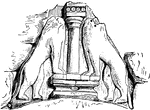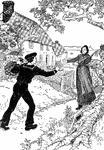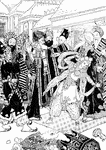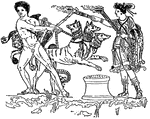
Hercules and Cerberus
"Hercules descended into Hades, accompanied by Mercury and Minerva. He obtained permission from Pluto…

Theseus and the minotaur
"The Athenians were at that time in deep affiction on account of the tribute which they were forced…

Theseus and the minotaur
"The Athenians were at that time in deep affiction on account of the tribute which they were forced…

Druids
"The Druidical system was at the height of at the time of the Roman invasion uner Julius Caesar. Against…
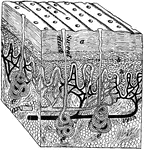
Section of skin
"A block out of the skin. a, dead part and d live part of the epidermis; e, sweat glands; n, nerve endings."…
Muscles of the forearm
"The extensor muscles on the back of the forearm. Note the tendons at the wrist." —Davison, 1910
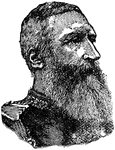
Leopold II
The king of Belgium, son of Leopold I., born in Brussels, April 9, 1835. he was liberally educated in…
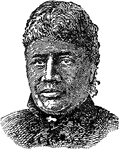
Lilioukalani
Lydia Kamakeha, queen of Hawaii, born September 2, 1838. She was a sister of King Kalakaua. On Jan.…
Ling
A species of sea-fish found in the northern seas as far north as Iceland. It is allied to the cod family.…
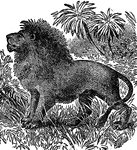
Lion
A magestic carnivorous animal, the largest of the cat genus. It is one of the most active of the large…
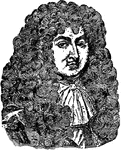
Louis XIV
King of France and King of Navarre from May 14, 1643 until his death. He inherited the Crown at the…

Mockingbird
A group of New World passerine birds best known for the habit of some species of mimicking the songs…

Ear
Interior of the ear. There is external to the head a wide-mouthed tube, or ear-trumpet (a), for catching…
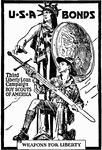
Liberty Loan Poster - USA Bonds
A Liberty Loan poster. "Third Liberty Loan Campaign, Boy Scouts of America. Weapons for Liberty."

Liberty Loan - Lend the Way They Fight
A Liberty Loan poster for the World War. "Buy bonds to you utmost."

Side View of the Body
A side view of the two great cavities of the body and their organs. 1: The mouth. 2: The thorax. 3:…

Front View of the Body
The position of the organs of the mouth, thorax, and abdomen. 1, 2, and 3: Salivary glands. 4: The larynx…

Knee-Joint
Front view of the right knee-joint. 1: Tendon of the extensor muscle. 2: Patella. 3: Ligament of the…
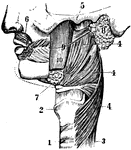
Face
A side view of face. 1 and 2: Trachea. 3: Esophagus. 4, 5, and 6: Muscles. 7: Submaxillary. 8: Parotid…
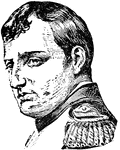
Napoleon
A general of the French Revoltion, and the ruler of France as First Consul of the French Republic from…
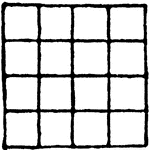
Knot of Destiny Design
This design dates back to Solomon's time. It is one of the Chinese Buddhist ornaments and is therefore…
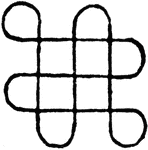
Knot of Destiny Design
This design dates back to Solomon's time. It is one of the Chinese Buddhist ornaments and is therefore…
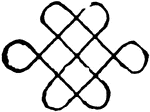
Knot of Destiny Design
This design dates back to Solomon's time. It is one of the Chinese Buddhist ornaments and is therefore…
Scorpion or Spider
Chinese, viciousness, poison. In India it is believed that if a scorpion creeps over the body it causes…
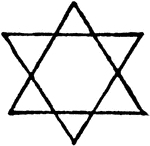
Star Designs
An emblem seen the world over in decoration, especially in synagogues. It is common in the Caucasian…

Niobe
A personage mentioned in Greek mythology as the daughter of Tantalus and the wife of Amphion, king of…
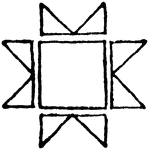
Star Designs
An emblem seen the world over in decoration, especially in synagogues. It is common in the Caucasian…
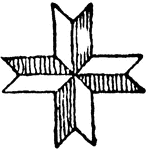
Star Designs
An emblem seen the world over in decoration, especially in synagogues. It is common in the Caucasian…
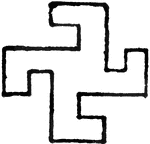
Swastika Design
"Derived from the Sanscrit word Svasti, which means good pretence. It dates bck three or four thousand…
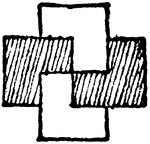
Swastika Design
"Derived from the Sanscrit word Svasti, which means good pretence. It dates bck three or four thousand…
Swastika Design
"Derived from the Sanscrit word Svasti, which means good pretence. It dates bck three or four thousand…
Turtle Design
The tortoise or turtle border design is a design in which the figure of the tortoise is arrayed in a…

Ladder Bracket
Ladder bracket on the back of a ladder. These are made in various styles. Some fasten to rungs. This…
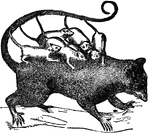
Opossum
A class of marsupial mammals native to America. They include a large number of species, ranging in size…
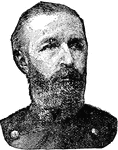
Fredrick Oscar
King of Sweden and Norway, born in Stockholm, Swden, Jan. 21, 1829. He is a son of Oscar I., and a brother…
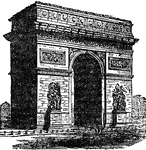
Arch of Triumph
A structure in the shape of a monumental archway, usually built to celebrate a victory in war. The arch…
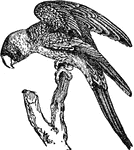
Parrot
A genus of tropical birds classes with the climbers. The genus includes many beautiful species, most…
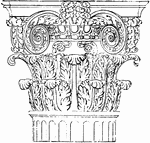
Composite capital
"The Composite or Roman order was the outcome of the attempt to improve the Corinthian, of which it…

Pantheon
"The finest monument of this time is the Pantheon of Rome, first built about B.C. 27, which is one of…

Assyrian Hunting Bas-relief
"Assyrian bas-relief. Part of a Lion-hunt, from Nimrud." —D'Anvers, 1895
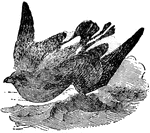
Petrel
A genus of sea-birds. They include many species, all of which have webbed feet and long and strong wings.…
Pike
A genus of fishes found in the freshwater bodies of America and Eurasia. Most species have a long body…

Plantain
A genus of plants distributed abundantly in all parts of the world. They inclue about one hundred species,…

Plantain
A genus of plants distributed abundantly in all parts of the world. They inclue about one hundred species,…
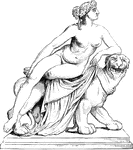
Ariadne
"Johann Heinrich von Dannecker, of Stuttgart, another great sculptor, excelled in portrait-statues,…
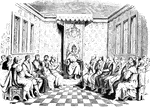
Edward VI
"Edward VI, and his Council. From a wood-cut on the title-page of 'Acts of Parliament," A.D. 1551."…

Pyramid
An architectural structure of solid masonry, built for various purposes in different parts of the world.
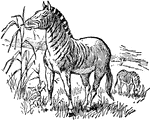
Quagga
The quagga is an extinct subspecies of the plains zebra, which was once found in great numbers in south…

Carnivorous Skeleton
The teeth of a carnivorous animal that lives on flesh alone. The front teeth are tearing ones, while…
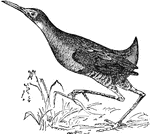
Rail
A genus of birds that includes about 150 species, whih are distributed throughout the world. They include…






